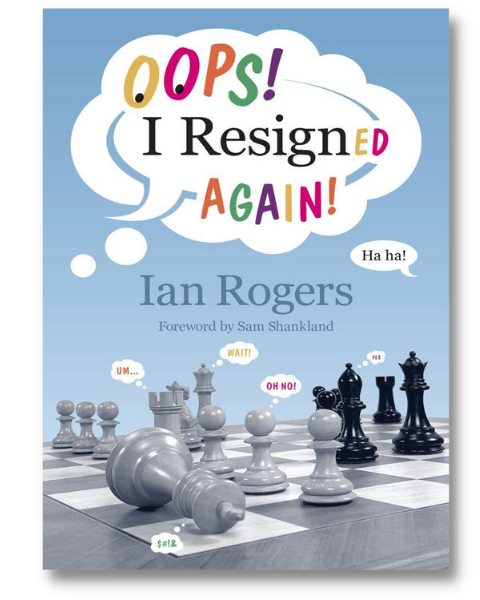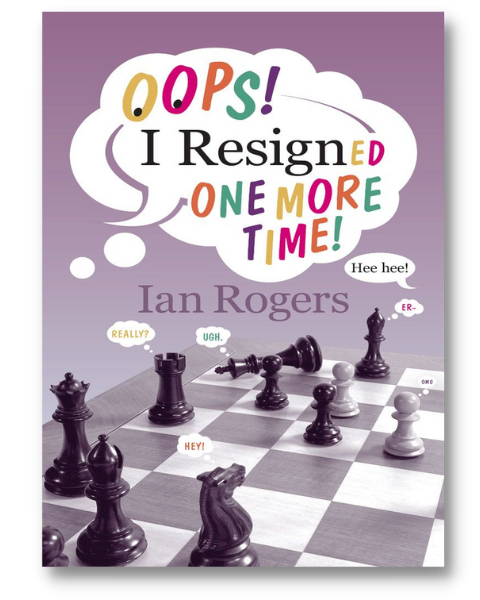Into the New Year we go, with all of our usual chess resolutions.
Study more, avoid bullet chess, read more books, work on the endgame, drop the chess openings that are just not working… you know the sort of thing.
Perhaps we should also add: ‘Don’t resign too soon’ to our lists, based on the evidence of Ian Rogers’ new book, ‘Oops! I Resigned One More Time!’ which is now available on Forward Chess.

Following hard on the heels of the first volume, ‘Oops! I Resigned Again!’ this sequel offers 20 chapters full of puzzles showing premature or misguided resignations in action.
Here is a randomly-selected series of premature resignations, to act as a warning for the curious.
There are lots of examples from the endgame and tiredness must surely be a major part of the problem.
Albert Blees – Jan Plachetka
Copenhagen Politiken Cup 1985
White to play
Black was hopeful of playing 70…Rf6, but those particular hopes were dashed after 70. Ke7, whereupon Plachetka resigned.
Unfortunately, the resignation was definitely premature, as Black could have played 70…Rxg6! ‘which leads to a standard draw after 71. Rh1 Rg7+ 72. Ke6 Ra7.’ The key point is that Black captures one of the pawns with impunity, thanks to the stalemate trap – 71. fxg6?? – with an instant draw.
Indeed, the quest for stalemate informs a number of the solutions to the puzzles in this book and serves as a reminder that such a resource should always be considered.
Let’s go back in time, to an example featuring the world’s best player of the day.
Howard Staunton – John Cochrane
London Training Match 1841
White to play
The game continued with 29. Qxf6+ Kg8 30. Rf3! and Cochrane resigned (0-1), as he saw no way out of what looked like a fairly standard checkmating attack.
Remarkably, he could have played on after the unlikely 30…Qxd5! when ‘there is, amazingly, no road to checkmate.’ This is something the reader can check before checking the author’s analysis – but the game is actually heading for a draw.
Position after the possible 30…Qxd5! Black’s king will have to run, but remarkably, he can eventually hide.
Of course, the one thing worse than resigning a drawn position is giving up when there was actually a win in sight (or, in the cases shown in this book, definitely out of sight).
Here is a case in point:
Lothar Zinn – Christian Syre
Dresden 1977
White to play
After 30. Be8+! Ke7 31. Bc6!
‘Syre resigned (0-1), understanding that once he had avoided the mate on e8 he would be, at best, multiple pawns down.’
However, Black could reverse the result by playing 31…Qd1+!! 32. Kxd1 (or 32. Kc3 Qxc2+!) 32…Bg4+ and Black captures the queen on h8 with a decisive material advantage.’
Potential position after 32…Bg4+
The book is mainly for entertainment purposes, but as the author says: ‘Enjoy the puzzles and the stories behind them, and if this book accidentally improves your defensive play, c’est la vie.’
Sean Marsh
- The Life and Games of Dragoljub Velimirovic (Volume 2) by Georg Mohr and Ana Velimirovic-Zorica - July 23, 2024
- Review: Chess Informant - June 7, 2024
- Is it time for a Modern Benoni revival - April 17, 2024


